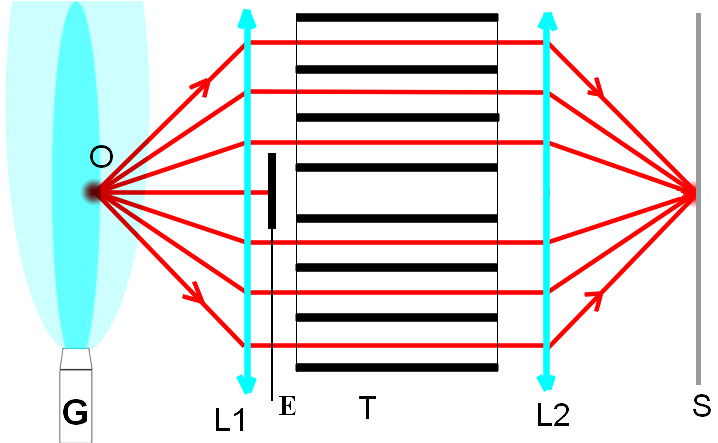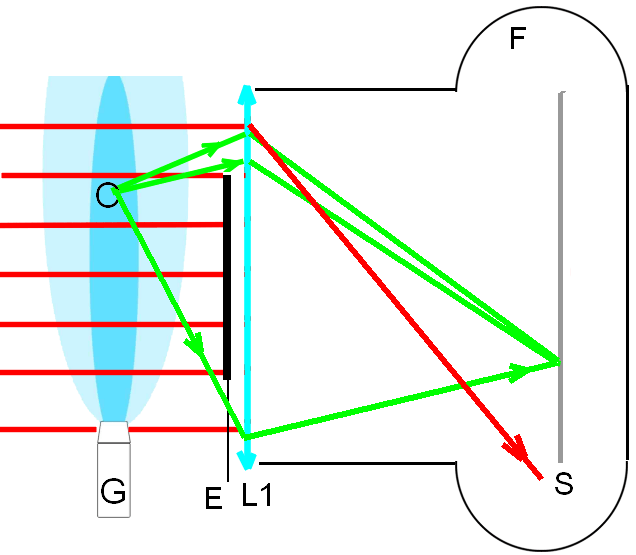Alexandr A.Shpilman ( sah@nursat.kz )
Observation of an "Axion
(Spin) Field"
(Continuation, beginning in N3/01)
|
|
|
|
In development of the idea of the optical tomograph I shall note the
following. It is necessary to put a disk absorbing light on the center of lens L1,
before the lens or after it as it is shown in Fig.1. Or light from a light
source will transit through the center of lens L1, the package of tubes T
and lens L2 without diffusing by the object in point O.
It will be a similarity
of a diaphragm in an object glass of a camera, but with a shadowing on the
contrary.
By the way, something
similar has a human eye. There is a stain not sensing to light on a retina of
an eye. Maybe, partly because of it a human eye sees that what modern optics
does not see.
By the way, something similar has a human eye. On a retina of an eye
there is a stain not sensing to light. Can be, partly, therefore human eye sees
that the modern optics does not see.
Those who take a great interest in attempts to
photograph objects of the "thin World" can try to place a central
diaphragm E in object glass L1 of the camera F (see Fig.2). This central diaphragm
will reduce light striking from the background. For precise making of focus it
is better to use the reflecting camera. At photographing the aura of objects,
it is necessary to take into account misfit of an optimum focal distance with a
focusing on the object, which is a source of the aura.
In the described
constructions it is necessary to use the good-coated lens with the major
aperture.
For observation of a beam of the generator G
probably it is better to use object glass L1 with a focal distance of
0.3-0.5 meters. For observation of a man’s aura, probably, this distance will
be too small. But at magnification of a focal distance the depth of sharpness
will be incremented, that will worsen the effect.

